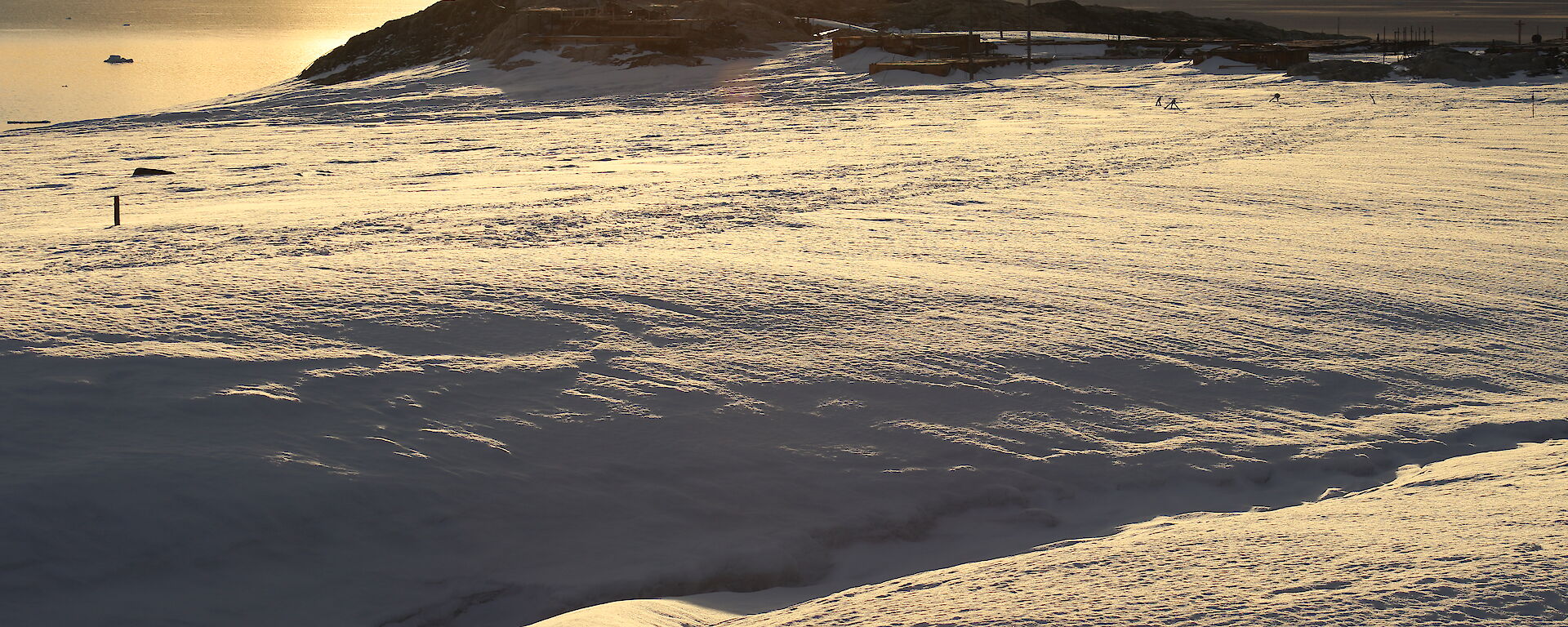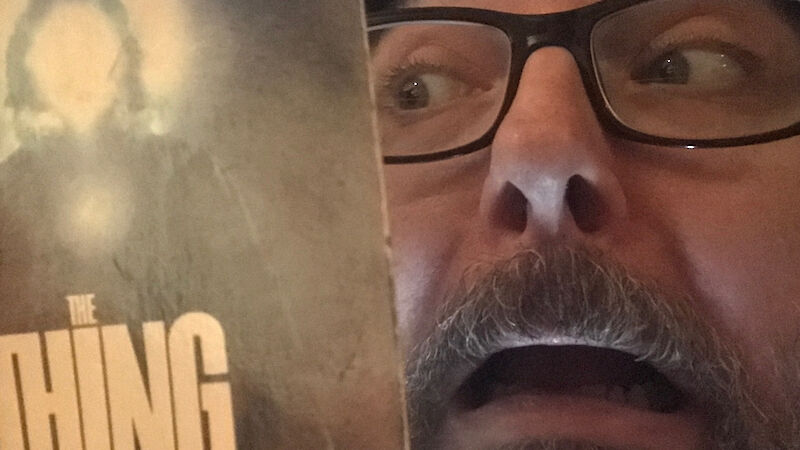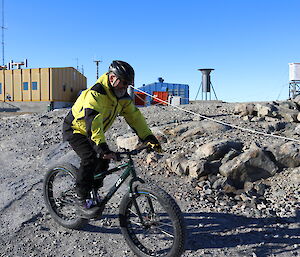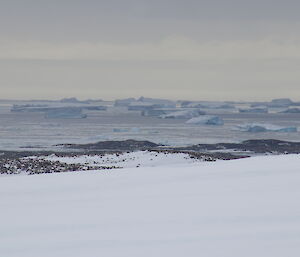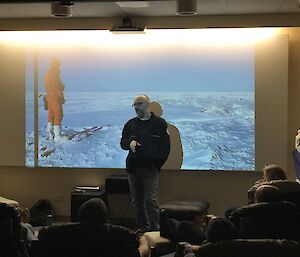Like a lot of people, I was inspired to visit Antarctica because of a book. In my case, it was a book by Alan Dean Foster that was in fact the novelisation of a film script by Bill Lancaster, which was in turn an adaptation of a 1938 novella called Who Goes There? by John W. Campbell writing under the name of Don A. Stuart.
Appropriately, given all this layering of adaptation and identity, the book in question was The Thing, a masterpiece of paranoia in the guise of science fiction horror that, quite apart from inspiring dreams of visiting “the worst desert on Earth”, also had a huge influence on my desire to be an author.
I applied for the Australian Antarctic Arts Fellowship with the aspiration of writing a book that is just as much about Antarctica as it is about Scott, Shackleton and Mawson on an expedition that never happened in real life. In order to capture the character of this incredible place, I knew I would have to go there.
Quite a lot has already been written about Antarctica. The Australian Antarctic Division library holds something in the order of 20 000 books. If each of them contains 50 000 words, that amounts to one billion already devoted to the subject. Do we really need more?
I would argue that yes, we do. If every one of those billion words was a snowflake, Australian Antarctic Division’s vast library would amount to little more than a bucketful of snow, a tiny pinch compared to the vast amount covering the great southern land.
This vast, changeable environment deserves to be preserved — in words as well as from reckless forces that would destroy it forever, such as commercialism or territorialism.
Examining these forces is one of the things that speculative fiction prides itself on being able to do better than any other genre: think the dystopias of Philip K Dick, the techno-mysticism of Arthur C Clarke, and the discomfiting hybrids of Octavia S Butler. By viewing the present through the lens of “what if”, we can sometimes see our own reflections most clearly.
So, what if The War of the Worlds actually happened, and a Martian cylinder crash-landed a long way off-course, in Antarctica? How might a band of hardy explorers react to the discovery of this desperate survivor? More specifically, how would Douglas Mawson, citizen of new nation “Australia”, feel about being caught between two crumbling empires, the Martian and the British? Whose side would he take?
This question lies at the heart of the novel I went to Antarctica to research. Called Lone Soul Standing, after a moment in Douglas Mawson’s diaries when he vividly compares Antarctica to Mars, my book combines the core issues of H G Wells’ masterpiece with the Heroic Age and Australian Federation — something that, to the best of my knowledge, no one has attempted before.
At this early stage, novels are bold in conception but requiring great effort to design, scaffold, and construct before they can possibly stand on their own. Going to Antarctica allowed me to explore certain scenarios, and in the process inspired many more.
I fully expected to be challenged by the cold. Born and largely raised in South Australia, I didn’t properly see snow until 2015, and even then only for a few hours. When I stepped off the plane at Wilkins aerodrome, I had no idea whether the environment I had dreamed of experiencing for thirty-five years would amaze or appal me.
It turned out that I was hot, dressed in full emergency gear and blasted by bright sunlight. Only later, when I doffed gloves and beanie and stepped out into a brisk wind to have my photo taken at the Antarctic Circle sign, did I begin to appreciate what true cold felt like.
Thus began a complex process of discovery, in which I learned that I loved the cold very much indeed, when cold was something I could chose to be.
I also loved the endless, white plain that was so much like my beloved outback and yet at the same time completely different.
I marvelled at the way my mind, lacking everyday referents such as trees, quickly lost track of distance and size, and equally quickly ascribed any straight-edged berg to the category “building” or “ship” or “city”. I became used in a way I previously thought impossible to a near-absence of night.
I never stopped being amazed by the friendly openness of the people who worked at Casey research station, who more than tolerated my questions and went out of their way to supply the answers I desired. This generosity of spirit I recognised from Apsley Cherry-Garrard’s The Worst Journey in the World and other pioneering accounts. I wondered if this kindness might extend to something not of this Earth.
My Antarctic adventure took me to the ruins of a previous station (Wilkes) and on foot around Casey. I marvelled at wildlife, geology, history, and science. Each time I stepped outside, I learned something new. A chance encounter with the aurora australis reminded me to look up as well as down.
It’s no wonder that Antarctica has inspired dozens of stories about aliens, because it really is the closest place to an alien world that we can experience right here on Earth. I have returned inspired to write not just Lone Soul Standing but another novel that came to me in my first ride on a Hägglunds tracked vehicle. I suspect I’ll be writing about this incredible experience for years to come.
“There are no words,” I overheard one of my fellow expeditioners say.
Many have tried to find those words. I sincerely believe that there will never be enough.
Sean Williams
Read more about Sean Williams experiences in Antarctica in his blog.

